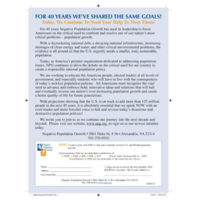The Sources of Unemployment
- Lindsey Grant
- February 1, 2012
- Forum Papers
- Forum Paper
- 0 Comments
And then they came running to Treasury and the Fed to save them. The total money supply (M1) includes demand accounts based on those loans, along with rising Federal stimulus spending and debt. It grew at an unprecedented pace, nearly 60% from 2007 to 2011. That is a lot of new money chasing resources, goods and services. Right now, people are cautious, and money velocity is low, but that money means more inflationary pressure when we get more rambunctious. And the prospect is about nil that that new money can be retired in the foreseeable future, given our fiscal prospects.
A structure built on debt is inherently unstable because of the snowball effect when enough debtors cannot keep up their payments. In a more solid structure, investment would be based on prior earnings.
What Can Be Done?I do not propose a return to the gold standard. It would be too inflexible a strait jacket for a modern economy. But we must learn other ways to discipline ourselves. This is a subject for the financial experts, but I believe we need
-
- a return to reliance more on savings and less on debt to finance new investment,
- a requirement for a balanced Federal budget over the business cycle,
-
- enforceable guidelines that relate money growth to real growth (or decline),
-
- the return to a separation of investment banking from commercial banking (as the Glass-Steagall Act of 1933 used to require, and former Federal Reserve Chairman Paul Volcker advocates.)
- and tight controls over leverage, particularly in investment banks.
At this point in history, debt-financed economic growth will not cure unemployment. We must reduce unemployment by reducing the demand for jobs, which means reducing immigration and, over the longer term, reversing population growth.
Such a turnaround will not come easily.
The Perpetual Growth Myth and the Economics of Greed. The driving force behind current policies is a state of mind. Forgive me for returning to an old theme: There are two warring paradigms or world views in conflict today. The dominant one is the belief in unending economic growth, beloved by entrepreneurs because it serves their immediate interest. The second one is the finite Earth paradigm, which recognizes the limits to growth in any finite system. Some sectors may grow, as technology and demographics change, but the overall scale will be depressed by resource limits.
The first paradigm is, at some point, a mathematical absurdity, but post-Keynesian economics assumes that unlimited resources and wealth are available for the taking, and that it is up to the ambitious and capable to appropriate and expand them. It is a theory built on unrestrained individualism and on greed, as its inventor John Maynard Keynes himself admitted. The problem is that greed is not self-limiting. We are living through the consequences of that belief right now.
A certain level of inflation serves that mindset. It erodes the savings of the prudent, as the currency loses value. But entrepreneurial gamblers – and debt-ridden governments – like it, because it enables them to pay the interest on their debts with cheaper money. The Federal Reserve Bank likes a 2% annual inflation rate. Other central banks set it as high as 4%. That is a dangerous game. At 4% inflation, money loses half its value in 17 years, destroying savings. Runaway inflation destroys jobs and eventually the economy, as Germany learned in the 1920s.
It was like a gigantic Ponzi scheme built on growing debt, a collaboration between government and private financiers, to the benefit of politicians and, particularly, financial speculators. Until now, the wage earning classes have gone along with it, partly because they didn’t understand it, partly because they hoped to join in the bonanza, and partly because they themselves were prospering as they rode the petroleum wave, until the 1970s. Wages were rising, and more and more wives were joining the paid labor force. Perhaps most important psychologically: we were living in an increasingly egalitarian society. In 1928, the top 1% of income earners received 23.9% of all income. That declined steadily for decades, until in 1975 the figure was down to 8.9%. In other words, wage earners were getting more of a growing pie. It was a quiet, massive social revolution, started by the New Deal. That turned around in the Reagan years, and by 2007 the top 1% were back up to 23.5% of total income.8
- Feminism, Migration, And Population Policy: A Letter To My Friends - October 25, 2018
- TWO WHITE HATS (An NPG Footnote) - September 23, 2014
- THE TWO CHILD FAMILY - September 22, 2014

